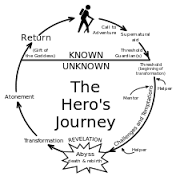Can the Hero’s Journey ever work for a Heroine?
Almost all Hollywood film’s use the hero’s journey as their overarching model. Star Wars, James Bond, Harry Potter and Peter Jackson’s Lord of the Rings and Hobbit films are just a few examples.
However the hero’s journey is deeply flawed and even sexist when applied to women who live such different lives to men.
 Only two stages of the hero’s journey are described in terms of a role for women, and each is condescending in its own way. In the stage called ‘The Meeting with the Goddess,’ the hero experiences powerful love. Such female roles are not partners or allies or equals, but figures to be honoured or protected, even idolized. Bond girls waiting to be rescued and Princess Leia in Star Wars are perfect examples of this.
Only two stages of the hero’s journey are described in terms of a role for women, and each is condescending in its own way. In the stage called ‘The Meeting with the Goddess,’ the hero experiences powerful love. Such female roles are not partners or allies or equals, but figures to be honoured or protected, even idolized. Bond girls waiting to be rescued and Princess Leia in Star Wars are perfect examples of this.
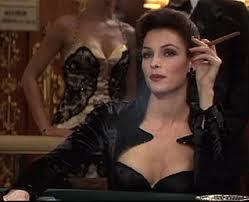 In the next stage, called ‘Women as Temptress,’ the hero is faced with powerful temptation that threatens to divert him from the path of his destiny. The bond girl who is out to kill him or distract him from his mission are good examples of the temptress metaphor. In the Lord of the Rings Eowyn is a sort of temptress for Aragorn, but obviously in this story the real temptress is the ring itself.
In the next stage, called ‘Women as Temptress,’ the hero is faced with powerful temptation that threatens to divert him from the path of his destiny. The bond girl who is out to kill him or distract him from his mission are good examples of the temptress metaphor. In the Lord of the Rings Eowyn is a sort of temptress for Aragorn, but obviously in this story the real temptress is the ring itself.
As a writer I am interested in how I can adapt the hero’s journey for a heroine to make my story resonate on a deeper level with readers.
One of the most important lessons I have learned whilst writing The Sword of Air is to not follow any model of writing – such as the hero’s journey – too strictly otherwise you end up with a story that is dull, lifeless and formulaic. It is even more important with a heroine to be flexible and to adapt the model of the hero’s journey to maximise its effectiveness.
 To make the heroine and the other female characters of my novel real people rather than damsels in distress such as Leia in Star Wars or bookish side kick’s like Hermione in Harry Potter I decided that it was important that women were everything that was good and bad about the world of The Sword of Air. In this way they would be brought to the forefront of the novel without being idolised as princesses or condemned as temptresses and old hags.
To make the heroine and the other female characters of my novel real people rather than damsels in distress such as Leia in Star Wars or bookish side kick’s like Hermione in Harry Potter I decided that it was important that women were everything that was good and bad about the world of The Sword of Air. In this way they would be brought to the forefront of the novel without being idolised as princesses or condemned as temptresses and old hags.
Each stage of the hero’s journey can be adapted for a heroine such as Niamh in The Sword of Air, with examples of traditional and modern heroines who have taken the same path.
Departure:
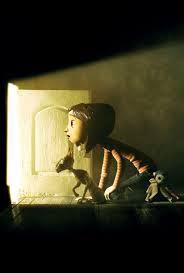 The Call to Adventure – The inciting incident of the novel when the heroine leans there is something exciting in store for her. In Neil Gaiman’s Coraline, the heroine finds a locked door that her mother opens to show that it used to lead to another apartment that shared the wall. Coraline wakes up during the night and sees a shadow that goes past her bedroom and into the room with the door.
The Call to Adventure – The inciting incident of the novel when the heroine leans there is something exciting in store for her. In Neil Gaiman’s Coraline, the heroine finds a locked door that her mother opens to show that it used to lead to another apartment that shared the wall. Coraline wakes up during the night and sees a shadow that goes past her bedroom and into the room with the door.
Refusal of the Call – The adventure may be tempting but heroines are usually a little less gung-ho than hero’s, doubting their abilities or desire to embark on the incredible journey ahead of them. Veronica Roth illustrates this beautifully in her novel Divergent where society splits everyone into different factions based on a particular virtue. The heroine Tris was raised in Abnegation (where everyone is selfless) but is offered the chance to join Dauntless (where bravery is cultivated). Heroines often have a greater sense of duty to parents or family than male hero’s. Making the choice to leave her life and her family behind her is an incredibly difficult choice for Tris. She risks being cut off from her family forever making the stakes even higher for her when she leaps into her new life.
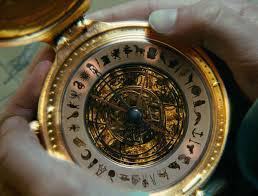 Supernatural Aid – Once the heroine finally accepts the call to adventure her mentor offers her advice and guidance and sometimes there’s even an object that can be used to help her on her journey. In Philip Pullman’s Dark Materials series Lyra is given an alethiometer (gold compass like device) by the master of Jordan College and told to keep it a secret from Mrs Coulter. Lyra’s mentor Fader Coram givers her clues as to how the alethiometer works.
Supernatural Aid – Once the heroine finally accepts the call to adventure her mentor offers her advice and guidance and sometimes there’s even an object that can be used to help her on her journey. In Philip Pullman’s Dark Materials series Lyra is given an alethiometer (gold compass like device) by the master of Jordan College and told to keep it a secret from Mrs Coulter. Lyra’s mentor Fader Coram givers her clues as to how the alethiometer works.
 Crossing of the First Threshold – This is the moment the heroine leaves the ordinary world and who she was for the unknown to embrace who she could be. In Alice in Wonderland the heroine follows the white rabbit and falls down the rabbit hole into another strange and extraordinary world.
Crossing of the First Threshold – This is the moment the heroine leaves the ordinary world and who she was for the unknown to embrace who she could be. In Alice in Wonderland the heroine follows the white rabbit and falls down the rabbit hole into another strange and extraordinary world.
Belly of the Whale – Having accepted the call to adventure the heroine gets her first taste of what she will be facing on her journey. In Suzanne Collins’ The Hunger Games we know Katniss is really in danger when she enters the arena and all of the tributes begin killing each other as they fight over a pile of food and weapons on day one of the games.
Initiation:
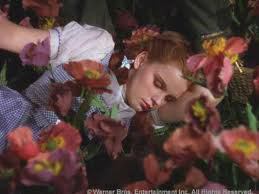 The Road of Trials – Each heroine has to undergo trials to prove they are worthy of their adventure, and to prepare them for what lies ahead. Trials are often physical tasks with a deeper meaning for the character that help her to develop into a stronger person emotionally as well. In The Wizard of Oz the road of trials is literally a road. The poppy field is an example of one of Dorothy’s trials. The wicked witch has poisoned the heroine and her friends with a field of poppies so that they won’t make it to the Emerald City. Other examples include the Witch almost setting the scarecrow on fire, the evil apple trees and sticking to the proper path of the yellow brick road.
The Road of Trials – Each heroine has to undergo trials to prove they are worthy of their adventure, and to prepare them for what lies ahead. Trials are often physical tasks with a deeper meaning for the character that help her to develop into a stronger person emotionally as well. In The Wizard of Oz the road of trials is literally a road. The poppy field is an example of one of Dorothy’s trials. The wicked witch has poisoned the heroine and her friends with a field of poppies so that they won’t make it to the Emerald City. Other examples include the Witch almost setting the scarecrow on fire, the evil apple trees and sticking to the proper path of the yellow brick road.
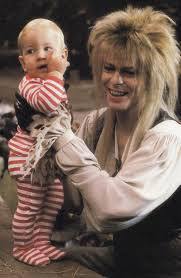 The Meeting with the Goddess – This step is traditionally about a hero finding the unconditional love of a woman worthy to be his companion. But for a heroine this step can be adapted making it even more interesting. Instead the heroine finds a love that is the ultimate inspiration for her adventure. For example Katniss volunteers as a tribute to save her sister’s life. In the film The Labyrinth (1986) directed by Jim Henson, Sarah sets out to rescue her baby brother from the Goblin King.
The Meeting with the Goddess – This step is traditionally about a hero finding the unconditional love of a woman worthy to be his companion. But for a heroine this step can be adapted making it even more interesting. Instead the heroine finds a love that is the ultimate inspiration for her adventure. For example Katniss volunteers as a tribute to save her sister’s life. In the film The Labyrinth (1986) directed by Jim Henson, Sarah sets out to rescue her baby brother from the Goblin King.
Woman as Temptress – For a hero there will be a woman who tempts him to abandon his adventure for her, or who distracts him from what is really important. But for the heroine this distraction doesn’t need to come in the form of a man or a woman again making this stage more interesting. It can be anything that tempts the heroine to take the easy way out. In Psyche’s Journey the heroine is given a task that will take her to Proserpine in the underworld. She feels this is impossible, so she prepares to kill herself. but a voice stops her and tells her how to complete the task of getting a box of beauty from the goddess of the underworld.
 Atonement with the Father – This stage must also be adapted for the heroine. Instead of confronting the father as Luke does with Darth Vader in the first Star Wars film, it is the heroines confrontation with someone who has a lot of power over her. In Cinderella the herald asks if there is not another sister living in the household who could try the glass slipper. The step sisters cry not, but finally Cinderella stands up to them and asks to try the slipper for herself.
Atonement with the Father – This stage must also be adapted for the heroine. Instead of confronting the father as Luke does with Darth Vader in the first Star Wars film, it is the heroines confrontation with someone who has a lot of power over her. In Cinderella the herald asks if there is not another sister living in the household who could try the glass slipper. The step sisters cry not, but finally Cinderella stands up to them and asks to try the slipper for herself.
 Apotheosis – The divine moment separate from her adventure that is the turning point for the heroine. In Suzanne Collins’ Mocking Jay this moment occurs when Katniss realises President Snow is not the real power and that the real tyrant is Alma Coin who resolves to destroy the young heroine through jealousy and to maintain her own rulership.
Apotheosis – The divine moment separate from her adventure that is the turning point for the heroine. In Suzanne Collins’ Mocking Jay this moment occurs when Katniss realises President Snow is not the real power and that the real tyrant is Alma Coin who resolves to destroy the young heroine through jealousy and to maintain her own rulership.
The Ultimate Boon – After facing her deepest fears and conquering the villain the heroine is rewarded for what she has achieved. for Campbell this is usually an item or a piece of knowledge that his hero is meant to bring back for the rest of humanity. In order to adapt this stage for a heroine, the ultimate boon can be the achievement of her deepest desire, such as love or a new confidence. For Dorothy in The Wizard of Oz it was to return home to her family.
Return:
 Refusal of the Return – When the journey is finally complete it is natural for the heroine to not be able to imagine returning to her ordinary life again. A beautiful example of this is at the end of Philip Pullman’s The Amber Spyglass when the heroine Lyra and Will the boy she loves promise to return to the Botanic gardens to a corresponding bench which stands in both of their worlds, every year on a Midsummer’s day, to think of each other and to be together in this way.
Refusal of the Return – When the journey is finally complete it is natural for the heroine to not be able to imagine returning to her ordinary life again. A beautiful example of this is at the end of Philip Pullman’s The Amber Spyglass when the heroine Lyra and Will the boy she loves promise to return to the Botanic gardens to a corresponding bench which stands in both of their worlds, every year on a Midsummer’s day, to think of each other and to be together in this way.
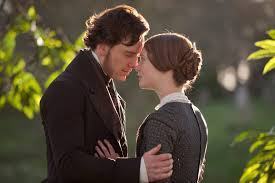 The Magic Flight – Even after the heroine accepts that she must return to the ordinary world, the journey isn’t completely over. There are usually still a few surprises along the way. In Jane Eyre the heroine has escaped Thornfield but she is still in love with Rochester. Jane is torn between wanting to leave her past behind and start a new life, and returning to her lover. The inheritance she receives opens up a new path forward and she sees a way to create a new family for herself, But what kind of life will she have with minister St John?
The Magic Flight – Even after the heroine accepts that she must return to the ordinary world, the journey isn’t completely over. There are usually still a few surprises along the way. In Jane Eyre the heroine has escaped Thornfield but she is still in love with Rochester. Jane is torn between wanting to leave her past behind and start a new life, and returning to her lover. The inheritance she receives opens up a new path forward and she sees a way to create a new family for herself, But what kind of life will she have with minister St John?
 Rescue from Without – A price must be paid for an adventure of this magnitude. Despite her victory, an emotional or physical toll is taken on the heroine. At the end of Suzanne Collins’ Mocking Jay, Katniss is almost insane from all the horror she has witnessed and the grief of loosing her sister. But with the help of Peeta, her true love, she is able to reclaim her mind and live her life.
Rescue from Without – A price must be paid for an adventure of this magnitude. Despite her victory, an emotional or physical toll is taken on the heroine. At the end of Suzanne Collins’ Mocking Jay, Katniss is almost insane from all the horror she has witnessed and the grief of loosing her sister. But with the help of Peeta, her true love, she is able to reclaim her mind and live her life.
 The Crossing of the Return Threshold – The adventure has to end, but the heroine has been changed and returns to ordinary life with the knowledge she has gained on her journey. Philip Pullman has a powerful moment of crossing the return threshold for his heroine, Lyra, at the conclusion of his Dark Materials trilogy. There are many parallel worlds in the story connected by windows. At the end of the book these windows must all be closed between the different worlds. Lyra and the boy she loves, Will, come from different worlds and must each return to their own in order to live full lives. As a result, when Lyra returns to her world, she is leaving behind the love of her life. It is at once empowering and heartbreaking.
The Crossing of the Return Threshold – The adventure has to end, but the heroine has been changed and returns to ordinary life with the knowledge she has gained on her journey. Philip Pullman has a powerful moment of crossing the return threshold for his heroine, Lyra, at the conclusion of his Dark Materials trilogy. There are many parallel worlds in the story connected by windows. At the end of the book these windows must all be closed between the different worlds. Lyra and the boy she loves, Will, come from different worlds and must each return to their own in order to live full lives. As a result, when Lyra returns to her world, she is leaving behind the love of her life. It is at once empowering and heartbreaking.
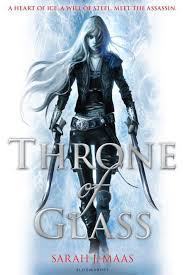 Master of Two Worlds – At the end of her journey the heroine has found a new balance in her life. This can be abstract – a better grasp of how to balance conflicting elements in her life. Or it can be literal, where the heroine is part of both the world she started in at the beginning as well as the new world that she explored on her adventure. At the end of Sarah J Maas Throne of Glass the heroine Celaena has come a long way from the slave mines of Endovier where she started out. She is now the King’s champion but she must sell her soul to win her freedom by serving the barbaric King for four years. If she fails at any of the missions he sets her, then those closest to her will die.
Master of Two Worlds – At the end of her journey the heroine has found a new balance in her life. This can be abstract – a better grasp of how to balance conflicting elements in her life. Or it can be literal, where the heroine is part of both the world she started in at the beginning as well as the new world that she explored on her adventure. At the end of Sarah J Maas Throne of Glass the heroine Celaena has come a long way from the slave mines of Endovier where she started out. She is now the King’s champion but she must sell her soul to win her freedom by serving the barbaric King for four years. If she fails at any of the missions he sets her, then those closest to her will die.
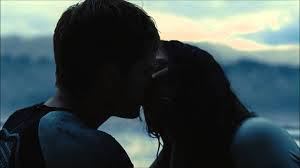 Freedom to Live – At the end of her ordeal the heroine is fundamentally changed forever. She has confidence in herself and her abilities, and is at peace with the trials she has suffered. At the end of the Hunger Games trilogy Katniss has finally left behind the brutality of life before the revolution that she inspired and can have a life of her own in the countryside with Peeta. In Neil Gaiman’s Coraline the heroine tricks the other mother’s hand with the key down into the well then covers it with heavy planks so it can never get out. Coraline has reached a new level of maturity. She is no longer nervous about starting the new school term because the trials she has faced have given her confidence in herself and her abilities.
Freedom to Live – At the end of her ordeal the heroine is fundamentally changed forever. She has confidence in herself and her abilities, and is at peace with the trials she has suffered. At the end of the Hunger Games trilogy Katniss has finally left behind the brutality of life before the revolution that she inspired and can have a life of her own in the countryside with Peeta. In Neil Gaiman’s Coraline the heroine tricks the other mother’s hand with the key down into the well then covers it with heavy planks so it can never get out. Coraline has reached a new level of maturity. She is no longer nervous about starting the new school term because the trials she has faced have given her confidence in herself and her abilities.
Some of the stages of the hero’s journey are more difficult to adapt for a heroine than others. While writing The Sword of Air I allowed myself to ignore certain elements as it suited the story and radically changed them as necessary. Ultimately the Hero’s Journey is a guide which many of us use subconsciously when writing without even realising it.
I would love to hear from you about your experience of using the hero’s journey model in your own writing or if you have every tried adapting it for a heroine?
R J Madigan


